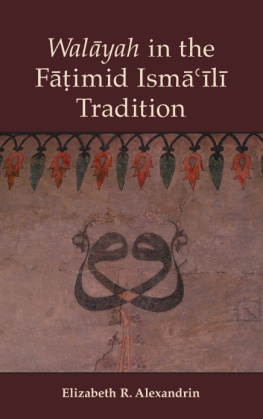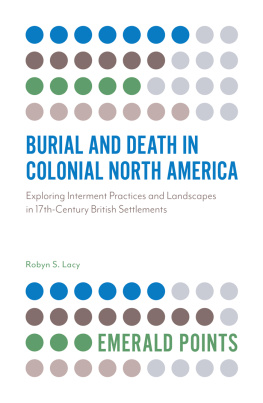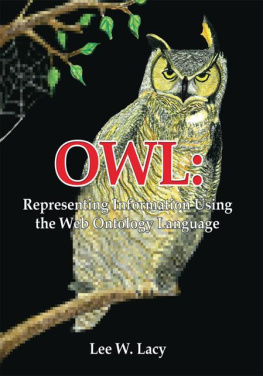First published in 1923 by
Routledge, Trench, Trbner & Co Ltd
Reprinted in 2000,2001 by
Routledge
2 Park Square, Milton Park, Abingdon, Oxon, OX14 4RN
Transferred to Digital Printing 2007
Routledge is an imprint of the Taylor & Francis Group
1923 De Lacy OLeary
All rights reserved. No part of this book may be reprinted or reproduced or utilized in any form or by any electronic, mechanical, or other means, now known or hereafter invented, including photocopying and recording, or in any information storage or retrieval system, without permission in writing from the publishers.
The publishers have made every effort to contact authors/copyright holders of the works reprinted in Trbners Oriental Series.
This has not been possible in every case, however, and we would welcome correspondence from those individuals/companies we have been unable to trace.
These reprints are taken from original copies of each book. In many cases the condition of these originals is not perfect. The publisher has gone to great lengths to ensure the quality of these reprints, but wishes to point out that certain characteristics of the original copies will, of necessity, be apparent in reprints thereof.
British Library Cataloguing in Publication Data
A CIP catalogue record for this book is available from the British Library
A Short History of the Fatimid Khalifate
ISBN 0-415-24465-X
Arabic History and Culture: 6 Volumes
ISBN 0-415-24285-1
Trbners Oriental Series
ISBN 0-415-23188-4
A SHORT HISTORY OF THE FATIMID KHALIFATE
BY
DE LACY OLEARY, D.D.
Lecturer in Aramaic and Syriac, Bristol University
Author of Arabic Thought and its Place in History
LONDON:
ROUTLEDGE, TRENCH, TRUBNER & CO., LTD.
NEW YORK: E. P. DUTTON & CO.
1923
Introductory Note
T HE following pages present a brief outline of the history of the Fatimid Khalifs who were ruling in Egypt at the time of the First and Second Crusades. Too often the student of European history gleans his knowledge of the oriental powers with which the West was brought into contact by the Crusades from western Christian writers, who do not fairly or truly describe those powers, and do not set forth clearly the strong and weak points which are so important in interpreting the actual forces with which the Crusaders were brought into contact. These pages are drawn from the Arabic and Persian historians so as to present a picture which, though inaccurate in some points, nevertheless shows the other side not perceived by the historians who wrote the narrative of the Crusades from a western standpoint. Directly, therefore, they supplement the western history, but are still more important in their indirect bearing as an effort has been made to show the rise and development of the Fatimid Khalifate and sect as a rival to the orthodox Abbasid Khalifate of Baghdad, which is most essential to the right understanding of the world into which the Crusaders penetrated, whilst at the same time it shows a curious and important phase of Muslim tendencies which are not without a bearing on the later history of Islam. The present essay does not claim to be an original study in a field thitherto unexplored, but simply aims at bringing together in an accessibly form material which will be of service to the student of mediaeval western history and to those who are interested in the development of Islam, and to do so with such comments as will enable it to be co-ordinated with contemporary European history.
I
The Shiites or Schismatics of Islam
I SLAM appears first on the page of history as a purely Arab religion: indeed it is perfectly clear that the Prophet Mohammed, whilst intending it to be the one and only religion of the whole Arab race, did not contemplate its extension to foreign communities. Throughout the land there shall be no second creed was the Prophets message from his death-bed, and this was the guiding principle in the policy of the early Khalifs. The Prophet died in A.H 11, and within the next ten years the Arabs, unifed under the leadership of his successors, extended their rule over Egypt, Syria, Mesopotamia, and Persia. To a large extent it was merely an accident that this rapid expansion of Arab rule was associated with the rise of Islam. The expanding movement had already commenced before the Prophets ministry, and was due to purely secuiar causes to the age long tendency of the Arabs,as of every race at a similar stage of economie and social development,to over-spread and plunder the cultured territories in their vicinity. The Arabs were nomadic dwellers in a comparatively unproductive area, and had been gradually pressed back into that area by the development of settled communities of cultivators in the better irrigated land upon its borders. These settled communities evolved an intensive agriculture, and thus achieved great wealth and an advanced state of civilization which was a perpetual temptation to the ruder nomads who, able to move over great distances with considerable rapidity, were always inclined to make plundering incursions into the territories of the prosperous agricultural and city states near at hand. The only restraint on these incursions was the military power of the settled communities which always had as its first task the raising of a barrier against the wild men of the desert: whenever the dyke gave way, the flood poured out. In the seventh century A.D . the restraining powers were the Roman Empire and the Kingdom of Persia, and both of these, almost simultaneously, showed a sudden military collapse from which, in the natural course of events they would, no doubt, have recovered after a short interval; but the Arabs poured in at this moment of weakness, just as the Teutonic and other groups of central Europe had broken through the barriers of the western half of the Roman Empire; and at that moment, in the course of their incursion, they received a new coherence by the rise of the religion of Islam and, by the racial unity thus artificially produced, became more formidable.












